 |
 |
 |
|
|
|
|
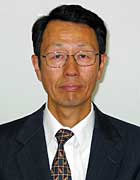 |
Abstract
Pneumatic systems have been used for many industrial applications.
At first, in process control, pneumatic actuators are used because of its safety actuations.
Automobile industries, factory automations, especially in semiconductor fabrication, pneumatic systems are used for special treatment. One is very quick motion, clean treatment and non-contact handling. Recently energy saving is needed.
This paper considers these new requirements, in analysis; new testing methods have been proposed and new actuator which can hold articles from upward without contact using vortex flow.
1) Analysis of Pneumatic Systems considering heat transfer
2) Proposal of Isothermal chamber for testing electrical solenoid valve and pneumatic servo valve.
3) High response and stable pneumatic leak detecting system.
4) Contact less moving actuator utilizing vortex flow.
5) New discharge nozzle element of super silent characteristics.
6) Air power meter for pneumatic saving energy. |
|
| |
|
|
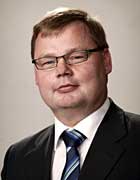 |
Abstract
Water hydraulics is an old technology area, which has been used already hudreds of years. Earliest applications where water was used as power transmission medium are known already from 2000 years ago. Modern water hydraulics can be comprised as a technology area where new design, material and control technologies are applied to water hydraulic systems. In 1990's very much research and development of water hydraulic systems and components were carried out in several laboratories in many countries. During the new millenium the research efforts has been a litle bit smaller, but the continuously rising concern about globe and global climate change has also increased the interest on water hydraulic applications. This paper describes the actual research activities related to development of water hydraulic components and systems. The main focus areas are discussed and the challenges and possible solutions of each subject are analysed. Water quality aspects, component technology, control aspects and also applications are covered. Also some analysis about water hydraulics' possible role in climate change process and energy saving are presented. |
|
| |
|
|
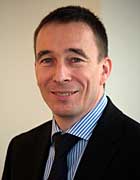 |
Abstract
Bosch rexroth (BR) is worldwide player in hydaulics. And we are approaching each cuntry to meet with local requirements. Japan is one of our target markets. Bosch rexroth Corporation (BR-Japan) is stong position in Japan for mobile applications. In parallel, industrial is also our important profitable market. Today I present BR and BR-Japan activities in industrial application, especially steel, press, test machine, marine, power generation. Additionally new products and system are introduced. |
|
| |
| Earth Quake Shaking Simulator |
|
| Keynote Speech 4 |
15:15-15:50, Wednesday, September 17 |
|
| E-Defense and Its Hydraulic Power System |
| Mr. Keiichi Ohtani (Guest Researcher, National Research Institute for Earth Science and Disaster Prevention (NIED)) |
|
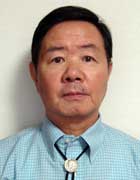 |
Abstract
The Hanshin-Awaji Earthquake (January 17, 1995) clearly demonstrated that the occurrence of very strong ground motion in the area near to the seismic faults is capable of causing severe structural damage beyond general estimation. It has emphasized the importance of earthquake engineering research into why and how structures collapse in real earthquake conditions. Considering the lessons learnt from recent earthquake disasters, National Research Institute for Earth Science and Disaster prevention (NIED) plan to construct the 3-D Full-Scale Earthquake Testing Facility (E-Defense is the nickname of this facility), which will be able to simulate the process of destruction of structures under the condition of real strong earthquake motions. The basic performances of E-Defense are maximum lording capacity 1,200 tons, maximum velocity 200 cm/s and maximum displacement 2 m p-p for two horizontal excitations and maximum velocity 70 cm/s, maximum displacement 1 m p-p for vertical excitation to realize destructive ground motion. The driving energies are mainly produced by the hydraulic power system, which is consisted 10 horizontal actuators, 14 vertical actuators, 20 main-accumulator units, 4 gas-engine units, oil supply system (include piping system) and others. The construction has begun at early 2000, five year
after the Hanshin-Awaji Earthquake and was completed at the beginning 2005, ten year after that Earthquake. |
|
| |
|
|
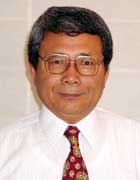 |
Abstract
Recently developed construction machinery continues to advance from machines only capable of performing a stated task or function to machinery that provides automatic feedback regarding where and how the equipment is being used and the unit’s current status. A number of such construction machines equipped with optional computerized construction features have even proved capable of interpreting construction designs and automatically regulating tools such as bulldozer blades. These new developments have led to conventional approaches to construction - such as continually interrupting operations in order to take measurements and check the project’s finished status - no longer being necessary, thereby allowing for extremely effective and streamlined operations. In this study I will present specific examples of the application of this information technology to construction machinery and consider how such construction machinery will continue to advance. |
|
| |
|
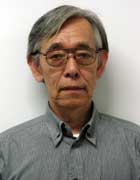 |
Abstract
In construction machinery, after second oil shock in 1978, fuel consumption cost has became an important evaluation factor for construction machinery, many improvement have been made to increase machine efficiency. Recent year, as the Kyoto Protocol get effective, further effort on fuel consumption cut or CO2 cut get necessary for all the machine makers.
As the success of the hybrid system in mobile, construction machinery makers also put a lot of force on researches to apply the hybrid concept in their own machines. In this paper, the researches and developments in construction machinery field based on the hybrid concept are reviewed, and their effects and problems are also discussed. |
|
|
| |
|